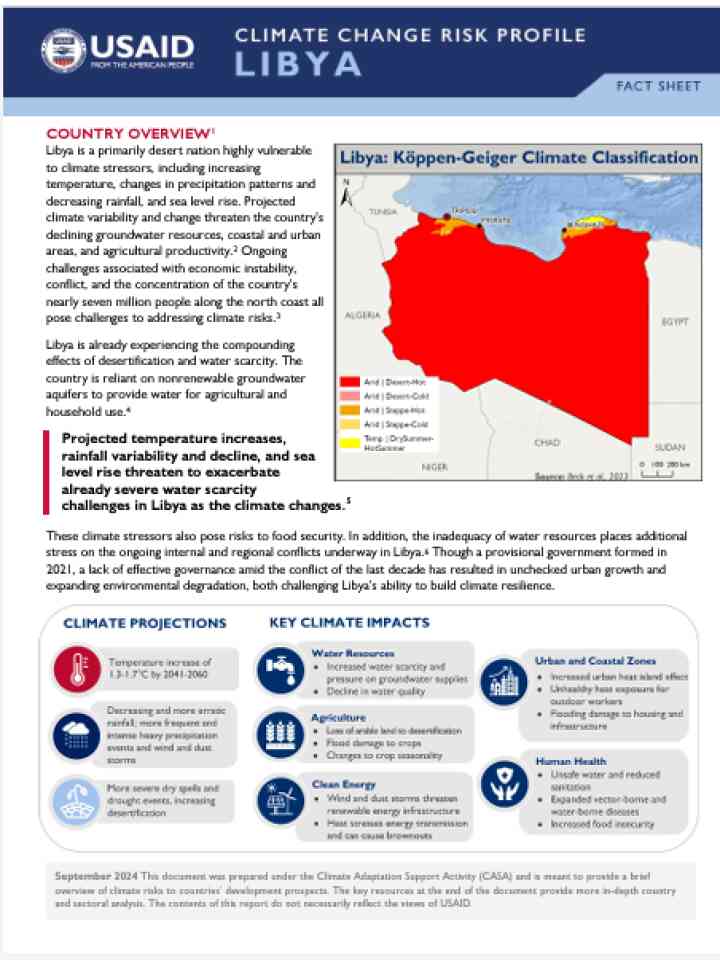Climate risk profile: Libya
This profile provides an overview of climate risks facing Libya, including how climate change will potentially impact human health and the country's water resources, clean energy sector, coastal and urban areas, and agricultural productivity. The brief includes an overview of Libya's geography and landscape, observed historical climate changes, and projected changes to key climate stressors.
Libya, home to nearly 7 million people, is primarily a desert nation. The country already experiences severe water scarcity and is reliant on nonrenewable groundwater aquifers for household and agricultural use. Projected temperature increases, rainfall variability and decline, and sea level rise threaten the country's declining groundwater resources, coastal and urban areas, and agricultural productivity. Meanwhile, ongoing challenges associated with economic instability, conflict, and population concentration along the north coast pose challenges to Libya's ability to build climate resilience.
Explore further
